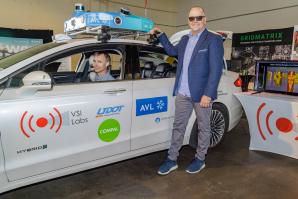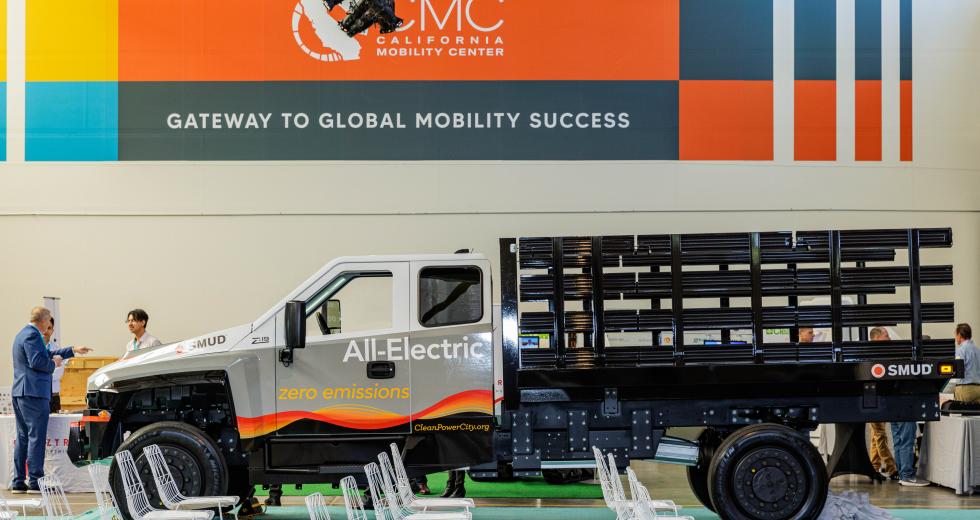On my mind this month is our electric economy — still a concerning issue. Here is some of the good news and the bad news.
Back in March, a press conference at the California Mobility Center caught my attention. The CMC made a big splash while handing over the keys to a new truck that’s very different from the other 950 trucks the Sacramento Municipal Utility District owns.
SMUD believes the truck is a smart investment — even at double the price of a typical heavy-duty truck — in the future of clean transportation. It’s a one-of-a-kind model that SMUD will field test to see if it can work as well as the most rugged, diesel-powered trucks that do the biggest jobs — while running 100 percent on electricity.
In the next few months, four more all-electric trucks in different configurations will be delivered to SMUD (a $1.2 million package) as it tests optional designs and works toward its goal of eliminating all gasoline and diesel big trucks from its fleet in the next eight years.
The trucks, produced by Zeus Electric Chassis from Minnesota, are the first products to roll out of the California Mobility Center, a facility created by SMUD and Sacramento State that gives start-up companies a place to work on innovative concepts and build futuristic technology for electric transportation.
We’re all having to pay more lately for a tank of gas than we ever have before ($100 to fill my car’s tank now versus $60 earlier). And science has linked the use of oil and gas to global warming. Whether for economic, environmental or political reasons, there has been a call to phase out the use of oil and gas as quickly as possible. California and federal regulators have already mandated eliminating the sale of new gasoline-powered cars by 2035. Car makers have responded, already offering many all-electric or hybrid models with the promise of more to come.
Some cities have banned the use of natural gas in new home construction, citing the need to reduce global warming and believing that we can electrify all of the ways we use energy, from cooking to home heating. But those bans and mandates overlook the fact that much of the electricity we use is generated by burning natural gas. Even SMUD, which relies on renewable solar and hydro power to a greater degree than most utilities, generates electricity for 450,000 homes with a gas-fueled power plant. PG&E, which relies heavily on nuclear power, generates 16 percent of its power with natural gas.
It’s been 30 years since California led the global mandate to electrify cars, which still only make up about 2 percent of the cars on the road. Even as the number of electric vehicles increases, it will take decades to phase out the gasoline powered cars already on the road. The asphalt they will drive on is derived from oil, as is the propane that heats many homes in the foothills of our Capital Region. Most of our Amazon packages and groceries are still delivered by diesel trucks.
The shift to using more electricity for more things is coming, no doubt. There are a few all-electric school buses in Sacramento. California is even working on a rule to electrify those noisy leaf blowers.
As we expand the ways we use electricity, we still need it to be reliable — it has to be there when we flip the switch — and affordable. That’s important whether it’s for the region’s economic development or just to get through our daily lives at home.
Those are good reasons to not rule out any of the ways we generate electricity — at least not yet. With a growing population and more uses for electricity, we can’t afford to be too quick to rule out the use of oil and gas while renewables like hydro, solar and wind continue to develop and mature. Bloomberg’s New Energy Finance reports that solar and wind capacity have quadrupled in the last 10 years while solar generation costs have come down 90 percent in that time, making it competitive with natural gas. Still, their ability to meet most of our needs is years away.
The CMC has already attracted projects and partners from as far away as Qatar, Germany and Canada and as close as Seattle and Silicon Valley, working on better batteries, more efficient electric motors or SMUD’s heavy-duty trucks.
That widespread attention is a sign that the $15 million pledged by SMUD and the matching funds the CMC is attracting from other places are an investment for a new era. The economy in many places, from Texas to Kern County, California, was built on oil and gas development. If electricity is the “new oil,” the CMC is an important stepping stone to put the Capital Region’s economy on the right road for economic growth.
Winnie Comstock-Carlson
President and Publisher
–
Stay up to date on business in the Capital Region: Subscribe to the Comstock’s newsletter today.
Recommended For You

Driving Toward a Zero-Emission Future
The California Mobility Center opens its Ramp-up Factory to the public
The California Mobility Center recently debuted low-emission mobility technology at a new manufacturing facility.

Energy Revolution
Emerging technologies in the Capital Region are driving efforts toward electrification of the two most polluting sectors — mobility and buildings
As energy use advances, utilities ecosystems are looking to
build the appropriate infrastructure to respond in real
time.

Resilience Is the Secret to Long-Term Success
Comstock’s president and publisher talks about bouncing back from adversity, recovering from a setback and staying on course to reach a goal.

Looking for Potential in 2022
Setbacks aren’t the exception, they’re the rule. Comstock’s president and publisher reflects on the challenges faced not only during the pandemic, but throughout a lifetime, and considers how they’ve strengthened her outlook.

A Time for Contemplation — and Innovation
Comstock’s outgoing editor considers the Great Resignation and the ways the pandemic has reshaped how the world sees work.

The Next Act
Part 6 of our ongoing series on downtown Sacramento businesses dealing with COVID-19
Sacramento businesses continue to adapt and recalculate as COVID-19 evolves.





